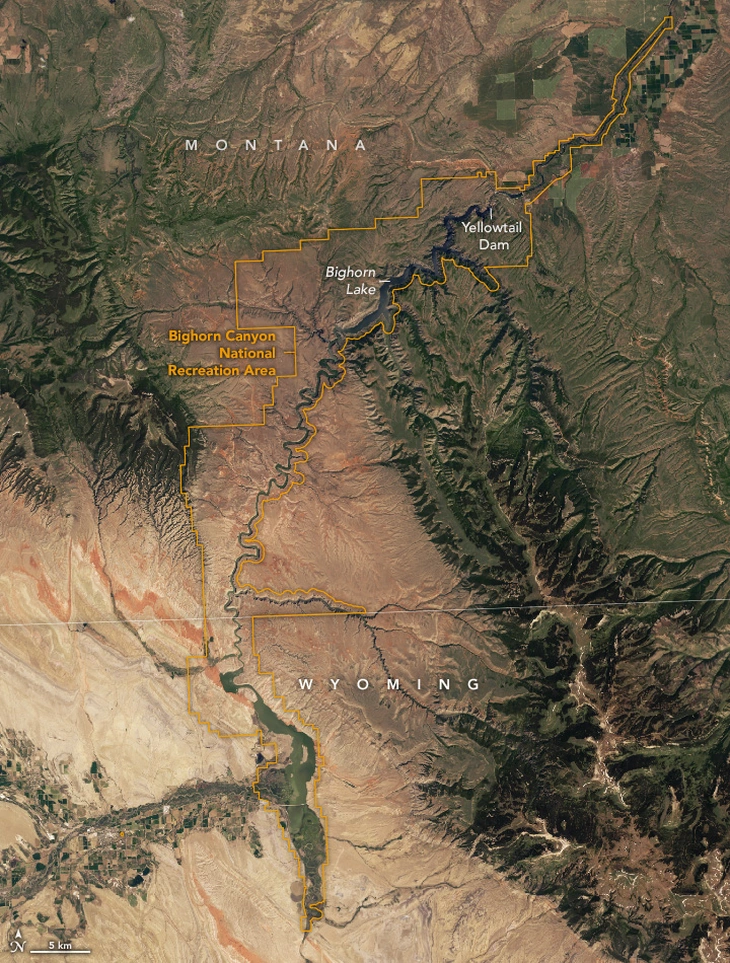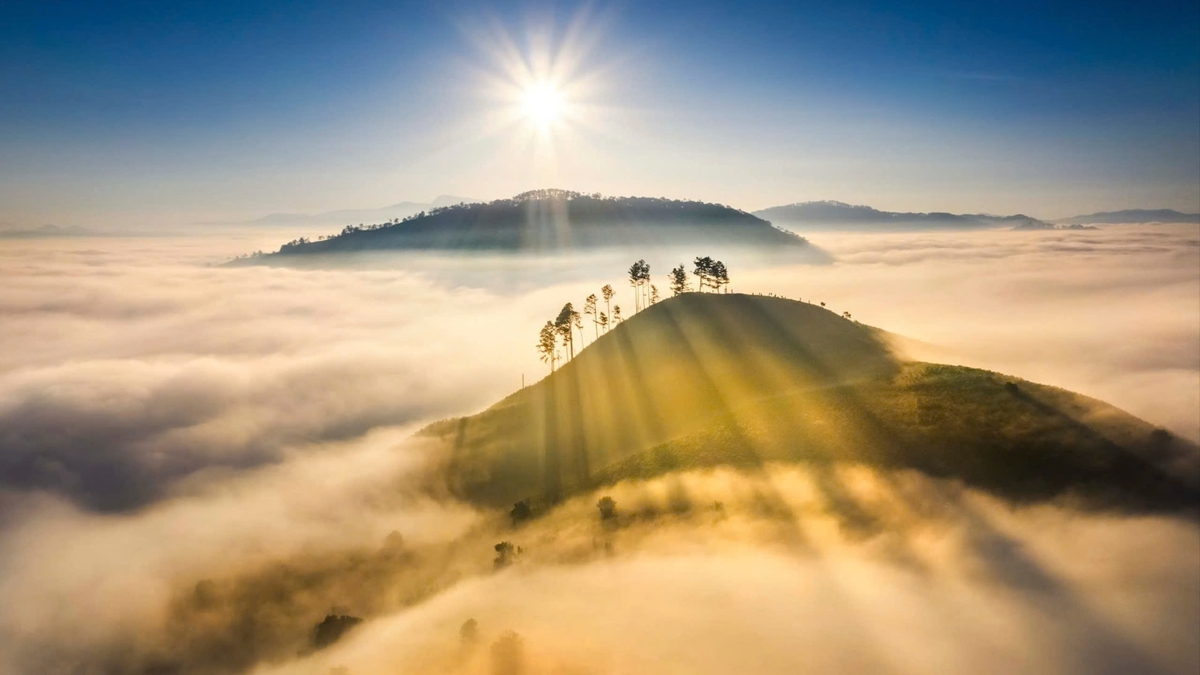
NASA images show prominent geological folds cutting through the terrain in Montana and Wyoming - Photo: NASA
These images, taken by the Landsat 9 satellite in June 2024, reveal deep red rock formations in Montana and Wyoming, which scientists believe were formed by a "super monsoon" phenomenon about 220 million years ago.
The discovery is centered on the Chugwater geological area in the Bighorn Basin, an oval-shaped lowland surrounded by six mountain ranges. The basin stretches 150 miles through parts of Montana and Wyoming and is known for its rich fossil treasures.
According to scientists, the characteristic red color of this area is a sign of extensive oxidation of sediment layers, due to extreme climate fluctuations during the Triassic period, when North America was still part of the supercontinent Pangaea.
NASA images show striking geological folds cutting through the landscape, the result of millions of years of tectonic activity. These formations occurred when continental plates, once connected in Pangaea, later broke apart and recombined to form the continents we see today.
During that period, large-scale “super monsoons” are thought to have swept across the tropical belts of the ancient supercontinent, bringing with them strong cycles of wet and dry seasons. These climatic changes are thought to have triggered the oxidation – or rusting – of exposed sediments over large areas.
The Bighorn Canyon region is now part of a national recreation area, established in 1966 after the construction of the Yellowtail Dam. The area encompasses more than 70 miles of lakes along the Bighorn River and attracts more than 200,000 visitors annually, providing a unique look at the area's geological and human history.
Source: https://tuoitre.vn/anh-ve-tinh-nasa-he-lo-ve-sieu-gio-mua-co-dai-20250420112127474.htm



![[Photo] Discover unique experiences at the first World Cultural Festival](https://vphoto.vietnam.vn/thumb/1200x675/vietnam/resource/IMAGE/2025/10/11/1760198064937_le-hoi-van-hoa-4199-3623-jpg.webp)
























![[Photo] General Secretary attends the parade to celebrate the 80th anniversary of the founding of the Korean Workers' Party](https://vphoto.vietnam.vn/thumb/1200x675/vietnam/resource/IMAGE/2025/10/11/1760150039564_vna-potal-tong-bi-thu-du-le-duyet-binh-ky-niem-80-nam-thanh-lap-dang-lao-dong-trieu-tien-8331994-jpg.webp)

































































Comment (0)